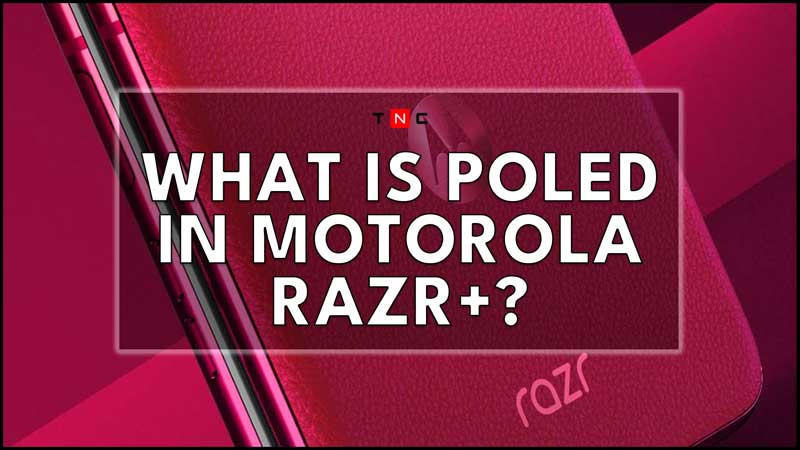A Smartphone Display or Screen has multiple layers. One of the important layers is the Substrate. It consists of all the necessary materials required to build a screen. This is where LCD, OLED, AMOLED, etc types of displays can be differentiated. AMOLED is one of the widely used display techs in mobile phones. It is one of the finest quality display panels that can deliver rich colors. Recently Motorola launched Razr+ Foldable Smartphone. This device has a pOLED display that is not common in mobile phone specs. In this guide you can have detailed info on what is pOLED in Razr+, is it durable or not.
Motorola Razr+ pOLED Display Details

AMOLED screen uses glass substrates while pOLEd uses plastic substrates. This allows more durability to screens that can bend in one direction. AMOLED displays are solid while pOLED with plastic substrates are flexible. That is why they are a kind of popular choice for curved displays. Motorola Razr+ has a 6.9-inch pOLED display that offers a max 165Hz of refresh rate. With it, the display also features HDR10+ & DCI-P3.
- Front Screen: 6.9″ pOLED
- Rear Screen: 3.6″ pOLED
What is HDR10+ & DCI-P3?
HDR stands for High Dynamic Range, designed to deliver max accuracy in brightness, contrast, and color. HRD10 offers a 1,000 nits brightness and 10bits color depth. Nits are measuring units for the max amount of light coming out of an object. In simple terms, nit is the amount of light coming out of a candle per square meter. For if we say 1000 nits, that means light emitted by 1000 lights in an area of 1000 square meters. For mobile phones or for TV there is HDR, HDR10, and HDR10+ display tech. HDR10+ display can provide 4000 nits of maximum brightness. Technology that is similar to HDR10+ is Dolby Vision. It can provide up to 10,000 nits of brightness. This is commonly used for wide-screen flat TV’s where 4K or HDR content is a priority. DCI-P3 is RGB Color Space. You might have heard about sRGB display, compared to that DCI-P3 provides higher color space. Along with this Razr+ also offers Dolby Atmos audio. You can also have the same on compatible Bluetooth earphones.
Motorola Razr+ Display Quality:
Motorola Razr+ has two screens, one is foldable at the front, and a second 3.6″ small screen sits with the rear camera. The back screen provides a max resolution of 1066×1056 @ 144Hz. The front screen provides an FHD (1920×1080) resolution @ 165Hz. The front screen brings in vibrant colors for videos and gaming. The rear screen is more like a support screen that can let you see live camera previews or notifications. Due to the second screen, you won’t really need to open your phone to check any updates.
